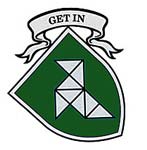1 Wing
On 19 November 1996, all training units were moved to Beauvechain Air Base, a former air defense base. A few years later, on 12 September 2000, the Air Force's Tactical and Training Commands merged into COMOPSAIR, and the TEC was transferred into the structure of 1st Wing. Meanwhile, its instructors took an active part in the integration process of the Alpha Jet avionics update. Although the insignia of the "Green Cocotte" had survived the different changes in organization, the "shadow" squadron number had slipped into oblivion. In early 2001, on request of the CO, Major Conte, the unit obtained once more its squadron number. Nevertheless, on 30 August 2001, the Squadron is disbanded, and the mission of Training and Evaluation Center is taken over by 7 Squadron. From 2001 to 2005, the Training and Evaluation Centre existed as part of the 1st Wing Staff. Although continuing to supervise the training process, the different courses were taken over by the training squadrons. After the move of the Alpha-Jets to Cazaux in 2004, on 14 November 2005, [14] the TEC returned to being a flying unit, and started once more training the new instructors on SF260. Slowly, the unit continued to evolve, first by taking on the IFR course again, later by hosting and supervising the Flying duties of several Staff Officers. This task became even more important after the phasing out of the Fouga Magister in September 2007. [15] To acknowledge the unit's status as a flying squadron, it received the traditions and insignia of 9th Squadron on 21 February 2008.
Basic Flying Training School
After a further re-organisation of the Belgian Armed Forces, the A109BA helicopters of the Wing Heli, based at Bierset, moved to Beauvechain on 1 September 2010. The name and traditions of 1st Wing were handed over to the helicopter unit. [16]
Both training squadrons (5 and 9) now constitute the Basic Flying Training School. Still based at Beauvechain, this school is now independent of 1st Wing.
Commanding Officers as from Chièvres:
- DEMEY Lucien : 1952-1953
- de LIGNE Antoinne: 1953-1955
- GOOSSE Bruno: 1955-1956
- MOUZON Léopold: 1956-1957
- DELBEKE Dries: 1972-1974
- BIEUVELET Marcel: 1974-1976
- NUYTS Gustaaf: 1976-1979
- SCHOUPS Jean-Pierre: 1978-1981
- RABAEY Jacques: 1981-1982
- BOURET Marcel: 1982-1983
- CLAES Ludo: 1983-1985
- EVRARD Claude: 1985-1985
- VANDEPUTTE Edgard: 1985-1986
- MULLER André: 1986-1987
- DE SUTTER Eddy: 1987-1989
- MEYNCKENS Lucas: 1989-1991
- VANTIEGHEM Pascal: 1991-1993
- PIRSOUL Luc: 1993-1995
- JAUCOT Luc: 1996-1998
- CONTE Gilbert: 1998-2001
- RORIVE Paul: 2001-2005
- DESIRON Werner: 2005-2010
- NOPPE Dries: 2010-2011
- VAN dER LINDEN Sam: 2011-2014
- COLLARD Alain: 2014- 2016
- DEROUBAIX Christophe: 2016-2021
- VAN HERTERIJCK Paul 2021- now




